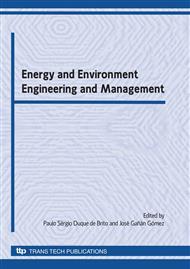p.83
p.87
p.93
p.99
p.105
p.111
p.117
p.123
p.129
Study of Thermal Conductivity of Materials Made of Sludges Water Depuration of the Brewing Industry
Abstract:
Industrial wastes contribute significantly to environmental pollution following the directives of European environmental policies, we must look for alternatives for minimization, treatment and / or recovery of wastes [1]. Several studies have found that basic materials such as polymers, cements and ceramics are better suited to inerting and neutralization of the waste by encapsulation in your matrix [2]. They are also increasingly used more insulating bricks. One way to increase this capacity is introduce additives organics into the matrix [3]. This is the case presented below, where they have used sludge from water purification of the brewing industry for the manufacture of ceramics.
Info:
Periodical:
Pages:
105-110
Citation:
Online since:
April 2010
Keywords:
Price:
Сopyright:
© 2010 Trans Tech Publications Ltd. All Rights Reserved
Share:
Citation:


